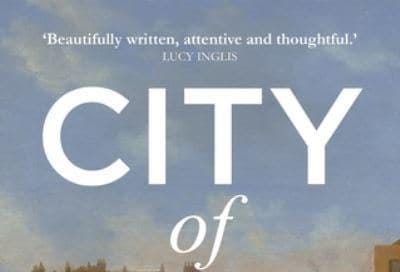Thomas Almeroth-Williams, City Of Beasts: How Animals Shaped Georgian London
Thomas Almeroth-Williams, City Of Beasts: How Animals Shaped Georgian London, (Manchester: Manchester University Press, 2019).
Pick up many Georgian novels, look at any print from the period, or - god forbid - read some of our cultural criticism of the metropolis in contemporary literary theory, and the picture of London in the eighteenth century would be one of industry, refinement, productivity or crime, filth, and social unrest. A space where country bumpkin, aristocrat, nouveau riche, and penny-pinching all met in varyingly classed indoor and outdoor spaces as they either attempted to ignore social difference or capitalise on it. It would, in other words, be conspicuously anthropocentric. What City of Beasts shows is what eighteenth-century cosmopolitan culture pointedly tried so hard to conceal: London streets, fields, and houses were filled with animals. The noise, smell, and nuisance were both endemic and troubling, somewhere between a given fact of life and a social nuisance that flits in and out of court records and diaries. Watch Dogs howled at all hours of the night, they bit passers by and gave away dismissed servants who returned to steal stock. Horses clattered through streets, pulling carts, carrying young men and women who spent hours each day in the saddle. Cattle, hundreds of thousands of cattle, driven through the street on the way to fattening and slaughter. To be a pedestrian was not just to risk dirtying your clothes, it was to risk physical injury as the tides of the countryside ebbed through the city of London.
Several vignettes stand out, and unfortunately one of them involves bestiality. Let’s get that out of the way first. A-W asks why exactly young men and women became so emotionally attached to their horses. Being such objects of sentimentality sets them apart: one argument of City is that there’s no real evidence for placing the birth of animal rights in the eighteenth century. Horses however are the exception:
It is now widely accepted in societies across the world that riders and horses develop close personal bonds. Numerous qualities have been suggested to explain why people are drawn to horses. The ecologist Paul Shephard, for instance, highlights the sensuousness of their ‘sleek’ coats and curvaceous bodies. ‘Close up, the horse makes the heart beat faster’, a sensation which, Shephard argues, is multiplied by the pleasure of genital stimulation while riding. 183
Frankly I would like to get away from the whole area of actually being in love with the horse. Much more sensibly ‘Alternatively, the anthrozoologist Lynda Birke observes that people often see horses as individuals, friends, and ‘partners on particular journeys’ adding that they ‘learn to read each other’ and ‘as partners, horses almost become people’. Equestrian manuals however, for a long time the source material for historians, hide this entirely. A-W argues therefore that we need to question how the readers of these manuals ignored, accepted, or interpreted these instructions. He thankfully glosses over the horseturbation.
On a much more pleasant and less horrifying note: accidents during horse racing. The image of horse riding that we have from modern courses is quite wrong. While it’s still a world-turned-upside-down carnivalesque atmosphere in its hangovers from long-abandoned county fairs, modern racecourses strictly separate the horse and its rider from the spectators. In Eighteenth-century horse racing however:
The dividing line between racers and spectators was ill-defined and unguarded, and many race-goers considered themselves fellow jockeys. Visiting Epsom in the 1760s, the Frenchman Pierre-Jean Grosly was shocked to find
Neither lifts nor barriers… the horses run in the midst of the crowd, who leaves only a space sufficient for them to pass through… the victor, when he has arrived at the goal, finds it a difficult matter to disengage himself from the crowd, who congratulate, caress, and embrace him.
Unsurprisingly, such interaction resulted in frequent accidents. At Tothill fields in 1736,
A young fellow being in liquor, furiously riding about the course, beat down a girl of about nine years of age, and rode over her… [later] the same person, riding amongst the thickest of the people, beat down and trampled on a young lad… and broke one of his legs 185
And as the spectators and riders travelled to the race course, they rejoiced in riding through the city, passing through the fullest and tightest streets as a test of their prowess. Again, proximity between horse and rider, crowd and racer are taken for granted. The horse’s passage through the city is not the odd thing, but the skill with which the rider accomplishes the act.
This proximity, then, leads us to ask just how far the history of civility, of humanity, of conceptualising and distinguishing and ordering the world that exploded in the eighteenth century was related to this exposure? Neo-materialists such as McCain rightly point out that the boundaries of the human are much fuzzier than we would like to believe: not just in terms of the biological and morphological changes induced by manual labour, or by the sensory experience of material culture, but also by the interaction between our immune systems and the natural world. We should, Almeroth-Williams’ work suggests, ask the same questions here. After City of Beasts, it’s no longer enough to take the presence of animals in the city for granted. We must acknowledge their presence even as eighteenth-century authors seek to drive them from the page.


